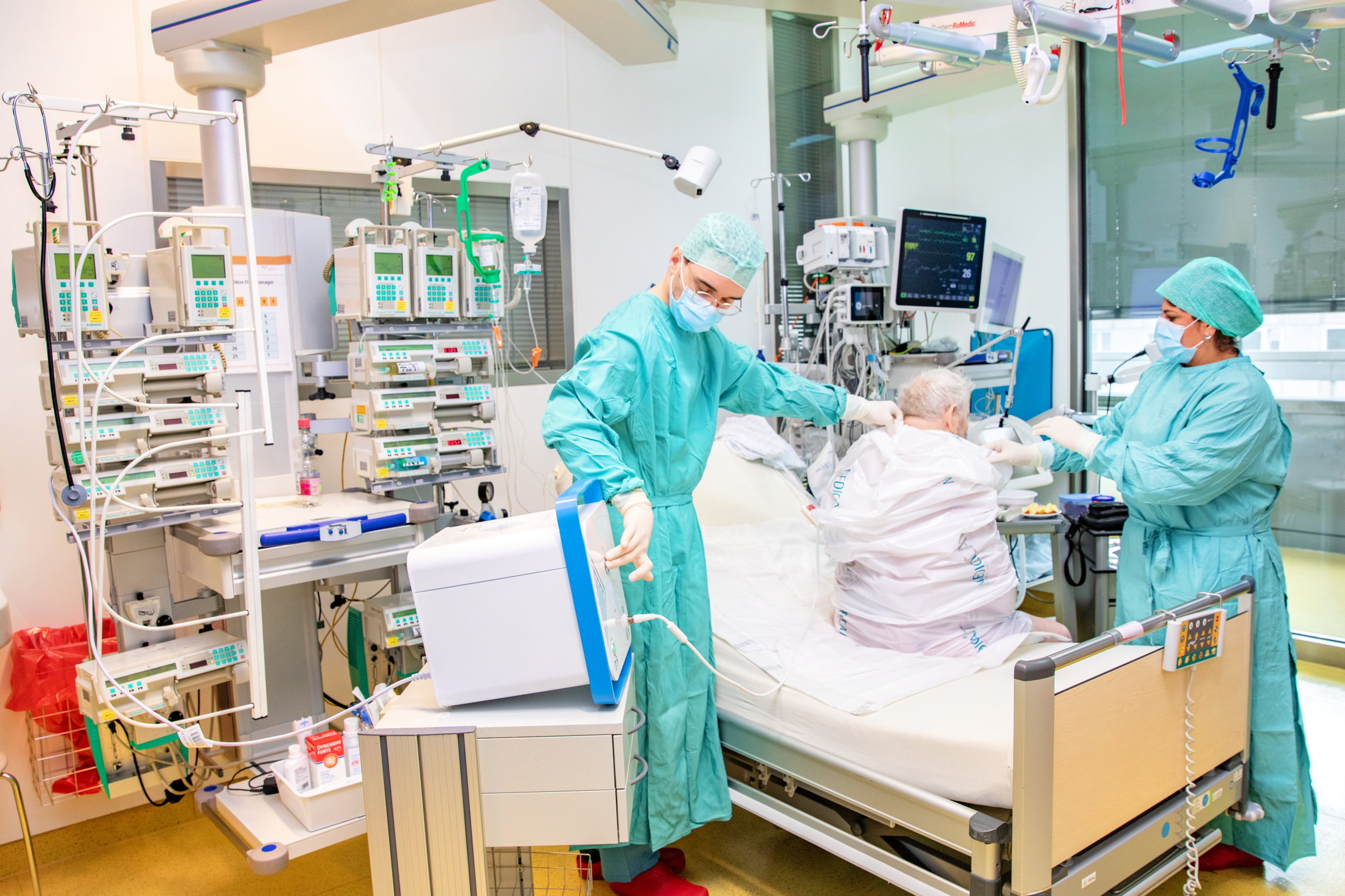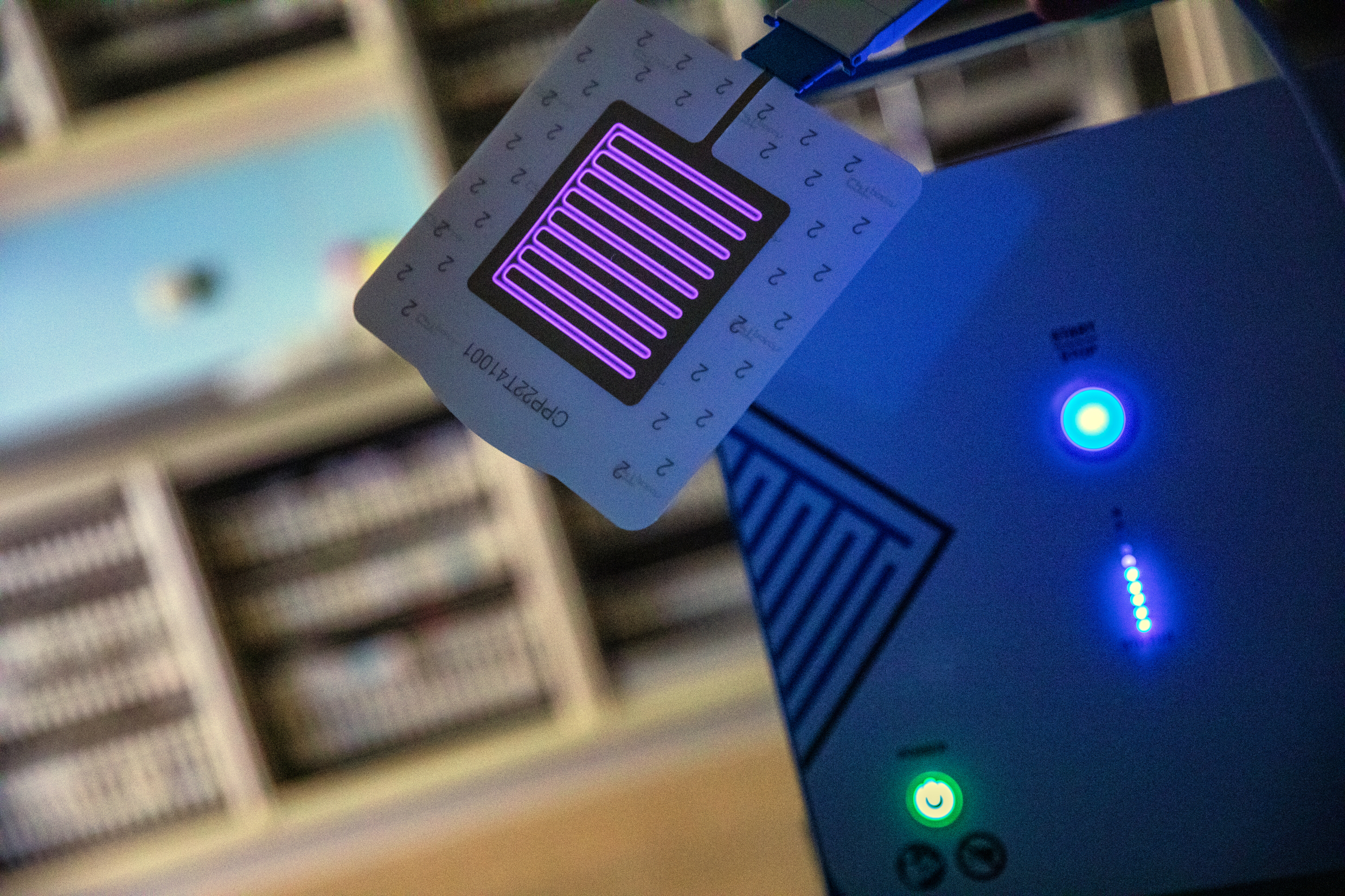MHH: Lower Saxony Severe Burn Center is certified as the first CPT Plasma Competence Center in Europe

Dr. Moritz Milewski and intensive care nurse Mesude Ünsaldi treat a patient with cold plasma. Copyright: Karin Kaiser / MHH

The cold plasma flows from this patch into the wound area. When the patch is in operation, it glows blue. Copyright: Karin Kasier / MHH
The Lower Saxony Severe Burn Center is the only center in the state of Lower Saxony that treats patients with the most severe burns. People with life-threatening injuries from northern Germany and Europe, including war victims from Ukraine, are treated here. The team at the center, which is part of the Clinic for Plastic, Aesthetic, Hand and Reconstructive Surgery at Hannover Medical School (MHH), recently began successfully using cold plasma to treat large burns. The center has now become the first facility in Europe to be certified as a CPT Plasma Competence Center for this new application. "The certificate is an important confirmation of our claim to provide the highest possible quality of treatment for severe burn injuries," says Clinic Director Professor Dr. Peter Maria Vogt.
Antibiotics no longer work
In the intensive care unit for severely burned patients, the medical and nursing specialists are always faced with a particular challenge: the wounds are infected with multi-resistant germs, against which even valuable reserve antibiotics are often no longer effective. "This is often the case with war casualties from Ukraine. They often arrive weeks after the injury," explains senior physician Dr. Thorben Dieck. "We need intensive and innovative treatment options for such cases."
Application for a new patient group
Cold plasma therapy is one such treatment option. In physics, plasma is considered the fourth state of matter. It is an electrically charged gas. Cold plasma therapy was significantly developed a few years ago by the company Coldplasmatech (CPT), a spin-off of the University of Greifswald, with the support of the Federal Ministry of Education and Research. With this technology, huge quantities of cold plasma can now be generated and used in treatment without contact with the wound. Until now, the procedure has mainly been used to treat smaller chronic or infected wounds. Its use in the treatment of large burn wounds is new - as in the Lower Saxony Severe Burn Center. Initial results show promising improvements in wound care.
Quick and simple procedure
The cold plasma required for the treatment is generated directly at the patient's bedside using a special device. The electrically charged gas flows out of a patch, a flat plate measuring around ten by ten centimetres. The treating nurse brings this patch close to the wound without touching it. "We cover the patients with large cloths or plastic sheets so that the plasma cannot escape and can work effectively," explains Mesude Ünsaldi, intensive care nurse and wound therapist. This ensures that the burn wounds are completely wetted by the plasma. The device generates around eight liters of cold plasma per second. A treatment lasts around 90 seconds and is repeated several times a week. Overall, it is a quick and easy procedure to carry out.
Impressive effect
Dr. Dieck is delighted with the effect: "The multi-resistant germs are killed, inflammation is reduced and wound healing is promoted." The method is now used on almost all patients at the severe burn center. Side effects have not yet occurred. For people with chronic wounds that previously healed very poorly or not at all, the experts have observed significant progress. Patients whose wounds are infected with multi-resistant germs particularly benefit from the procedure. The cold plasma destroys the germs and thus reduces the risk of them entering the bloodstream, where they could be fatal.
A good building block in treatment
The team at the severe burns center has high hopes for cold plasma therapy. "It is a very good addition to the comprehensive treatment of severe burn injuries," emphasizes Dr. Dieck. "The surgical measures, wound cleansing, classic wound care and, if necessary, transplantation are the basic building blocks." The center tries to find the optimal therapy for every patient. The specialists are always open to innovations. In addition to cold plasma, they also successfully use bacteriophages to combat multi-resistant germs. The clinic will continue to research and further develop cold plasma therapy through its own studies. Professor Vogt: "This new treatment option for severe burns, but also for other large wounds requiring plastic surgery, offers the prospect of significantly better wound care, survival and quality of life for our patients."
Text: Tina Götting